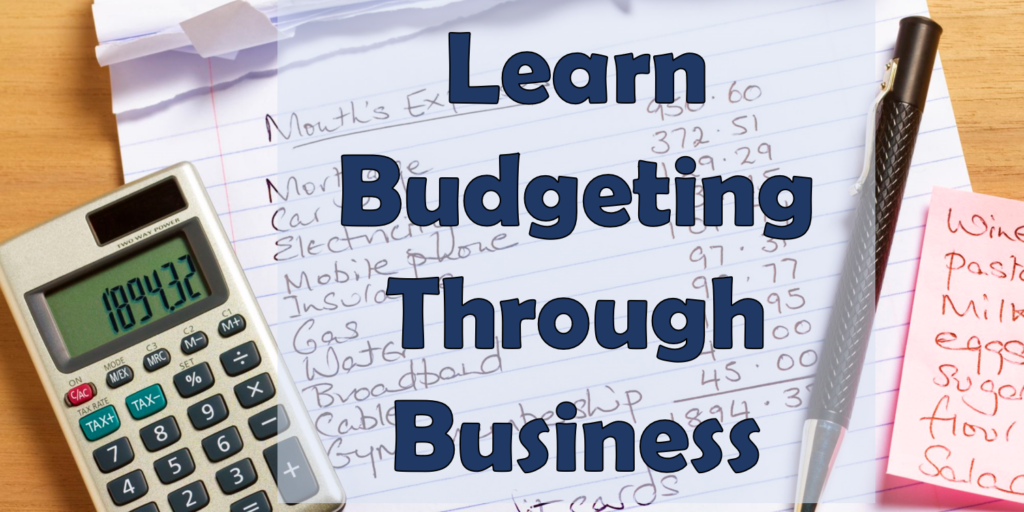I can and have talked about the direct and indirect benefits of starting a business and learning about entrepreneurship (see many, many past blog articles). There are tons of applications to businesses in the “real-world” outside of school as well as to our personal lives. The one I want to focus on today however is learning to budget money.
A Simple StartUp is a great sandbox for kids (and adults) to experiment and learn in. There aren’t as many factors to consider as you might get in a full-time, ‘my income and livelihood depends on it’ business, or the multiple layers to managing personal finances. The basic function of a budget is to track all income and then definite the purpose for each dollar earned. It needs to go to saving, investing, giving, or spending. Once you have made the spending plan, it then becomes an exercise in sticking to it and refining it until it satisfies your needs and aligns with your values. A business runs no different really. One major difference is that a business cannot run at a deficit, otherwise it is doomed to fail and go out of business. Households, and the government seem to be expectations to this rule, where often spending outstrips income, with borrowing occurring to bridge the gap.
We can learn a lot about creating a stable and sustainable budget for ourselves, by first practicing on a business. Whatever small income is coming in at the beginning needs to be able to cover the expenses of the business. Whatever is left gets put to work by growing the business, or going out as a distribution to the owners. No money is left idle. It all is accounted for and has a job.
Now for the mechanics of it.
- Write down all your expected sources of income over the next time period (week, 2 weeks, month, quarter). Be conservative in your estimates. Unless it is a guaranteed amount, assume it will be lower than you expect.
- List all the needed expenses of the business. This includes the costs needed to continue to produce and provide your product/service to your customers.
- List ways that you would like to grow the business in the future and the costs associated with each. Think of education, equipment, staff, technology, improved services, improvements to products.
- Determine how much or what percentage of profits are being paid to the owners.
- Look at the money leftover after needed expenses and owner shares are paid, and determine which growth areas you’d like to put money towards now or save for in the future.
- Execute the plan.
Consider the parallels to personal finances. Money comes in via salary or other source. We then grow the business (education, invest for retirement, save for a future expense), or we allocate it out of the household business, a.k.a. we spend it. Just like a business, we need to prioritise things that allow the business to continue to operate. We need food, shelter, and transportation, followed by necessary utilities. After that we can now fill our remaining wants with the leftover cash. The same steps apply to our own finances and one I want to highlight is the allocation of funds towards your growth. If you can increase your earning potential or invest in things that will pay a return in the future, your personal wealth will continue to grow just like a business.
It’s that simple. If you don’t allow your personal budget to run at a deficit, and you are investing in future growth for You Inc. then you will have a very stress free life when it comes to personal finances.
What lessons have business and entrepreneurship taught you about managing your personal finances? Share them in our Facebook Group!


